As part of our big fiber series, we have a quick one: the difference between MPO/MTP male and female connectors. This will eventually lead into a polarity discussion, but we are setting a foundation here. Let us get into the connector differences.
Difference Between MPO/MTP Male and Female Connectors
Getting to it, the key difference between the male and female version of the connectors is the presence of pins. One can see the female connector on the left and the male connector on the right below.
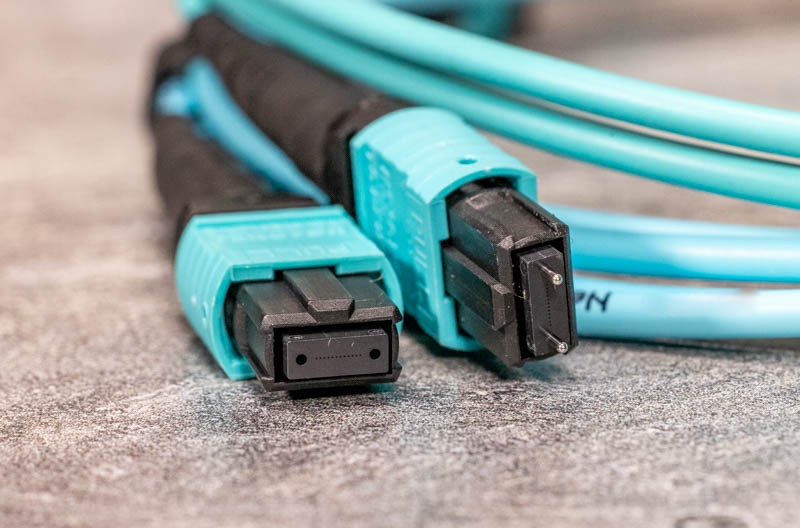
The two metal pins are the guide pins that help ensure proper mating. These pins are actually designed simply for alignment purposes and are not carrying any optical signals over them.
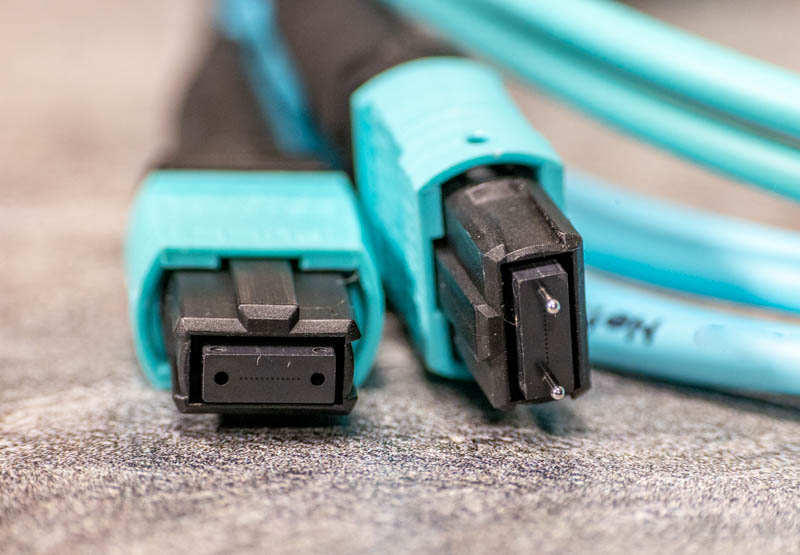
For those wondering, the rest of the connector assembly is usually the same, it is just the addition of pins that changes the connector’s gender. It is usually possible to change the gender of a cable, and there are MTP Pro cables that have a fairly easy field tool to do the replacement without having to go through the process of opening the connector.
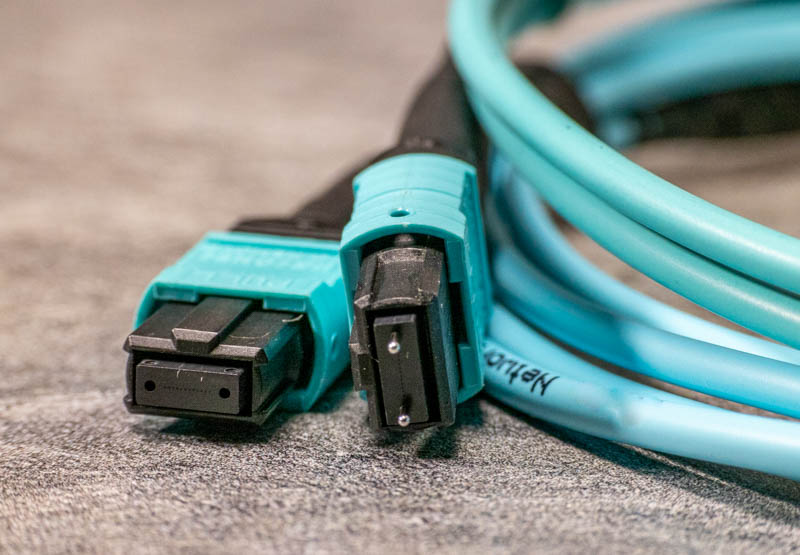
In terms of installation, technically one can put a female to female connector in a coupling device. Usually this leads to poor alignment of the fiber strands (the 12 fibers between the two pins.) Using two male connectors can cause damage because these are metal pins so it is always recommended to avoid that setup to not damage the fiber. Also, because the pins should contact each other, it will mean the fiber strands are not aligned and thus you are unlikely to make a data connection over that mating attempt.
Final Words
This is a small topic, but an important one many that are new to MPO/ MTP cables often miss. Both connectors are very similar so the big difference is really just the presence of pins.
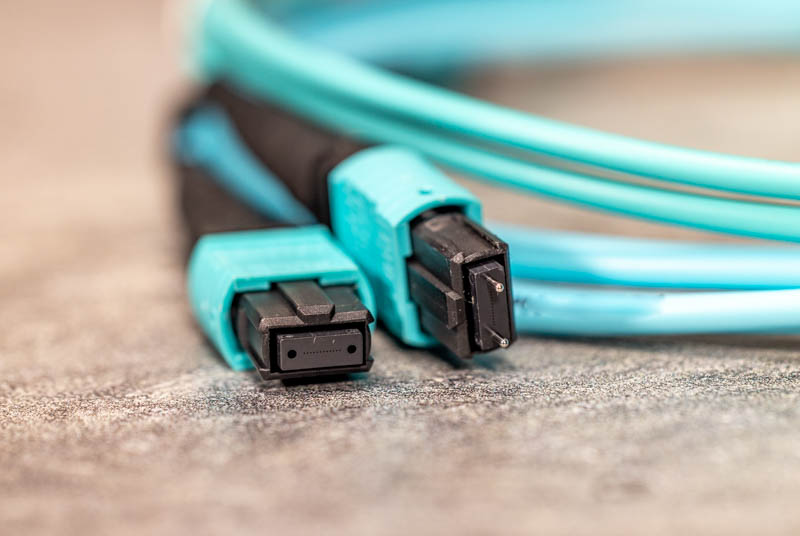
On optical transceivers, the connectors are almost always pinned. As a result, one would want to put a female connector into optical transceivers to avoid damage.
If you found this useful, you may also want to check out:
- Guide to Indoor Fiber Optic Cable Color Coding
- APC and UPC in Fiber Connectors and Why This Matters
- Corning CCH-04U LANscape 288-Fiber Distribution Box
- Fluke MultiFiber Pro Mini-Review MTP-MPO Testing Made Very Easy
We have a polarity guide coming as well.

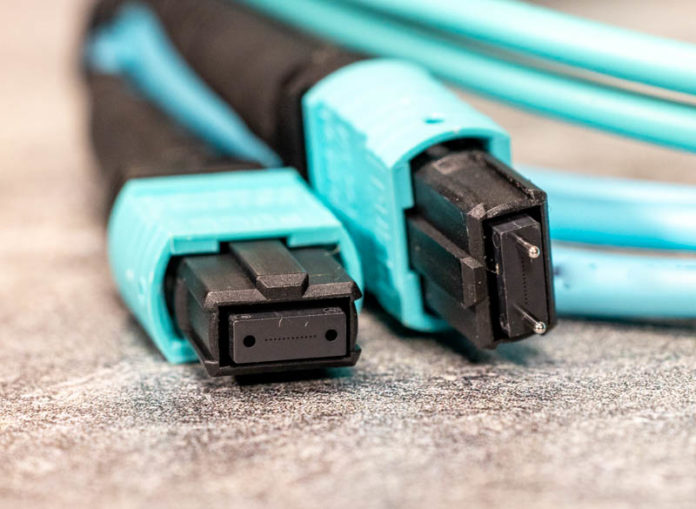



As someone who has built multiple datacenter networks and used Corning as a direct partner / consultant, this entire article is wrong. Pinned vs unpinned did not take over the definition of Male and Female for MTP connectors. Male and female still mean the same thing. i.e. Optics are female and the MTP connector at the end of the MPO cable is still male. Pinned and unpinned are a new dimension / requirement. As proof consider that MTP optics are always female but pinned, whereas the MTP connector that plugs into them must be male but pinned.
Sorry to say so harshly but most of STH recent articles about fiber / cables has been equally uninformed if not quite as wholly wrong.
err, typo, MTP connector that plugs into optic is male but UNpinned.
That’s silly anon. What they have is fine. Everyone even Corning and the rest of the industry calls pinned connectors male.
Corning: https://www.corning.com/data-center/worldwide/en/home/knowledge-center/maximizing-the-advantages-of-the-mtp-connector.html
“Don’t have the right male or female end on hand? Not a problem. These new MTP connectors make it easy to change gender and polarity in the field, without requiring a specialized skill set or a connector engineer.”
US Conec, that makes MTP Pro connectors even uses the same pinned = male unpinned = female https://www.usconec.com/connectors/mtp-connectors
Go troll somewhere else. You say you’re an “anon” Corning partner and consultant but Corning uses the same definition as having pins here as do the people who actually make the MTP connector.
Too much time, too little work and knowledge anon.